The global coffee market is changing rapidly and bringing many attractive opportunities for cafe owners and investors. In 2025, the Vietnam coffee market industry is expected to continue strong growth, but it also poses many new challenges. Let’s join Hello 5 Coffee in reviewing some prominent coffee market trends that you need to know to optimize competitive advantages and build sustainable brands.
1. Coffee Market Predictions
1.1 The Rise of Specialty Coffee
Specialty coffee continues to be the dominant trend in 2025. Consumers are increasingly interested in quality, origin, and coffee production processes. Specialty coffee not only provides unique experiences but also reflects the lifestyle of those who enjoy it. Cafe owners and investors should focus on providing high-quality coffee with its own story about origin and sustainable farming processes to meet this demand.
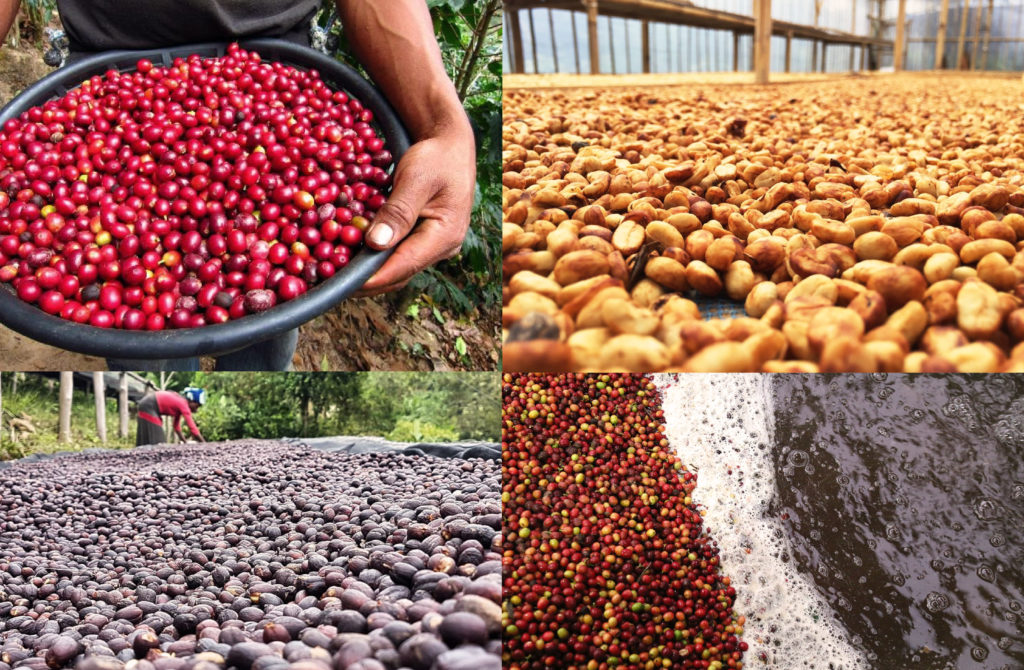
1.2 Enhanced Sustainability and International Certifications
Consumers are increasingly concerned about environmental and social issues. Having certifications such as Rainforest Alliance, Fair Trade, and UTZ is not just a plus point but has almost become a mandatory condition to attract and retain customers. Coffee not only needs to be delicious but must also be produced sustainably, environmentally friendly, and socially responsible to the community.
1.3 Convenient Coffee Market and New Brewing Technology
The demand for convenient coffee products such as instant coffee, coffee pods, and bottled “cold brew” coffee will continue to increase. At the same time, modern coffee brewing technology such as automatic coffee machines, vending machines, and mobile ordering applications will also play an important role. Investing in new technology will help coffee shops increase productivity, improve customer experience, and optimize operating costs.
1.4 Multi-Experience Cafe Models
In the future, coffee shops will not only be places to drink coffee but also spaces that combine diverse activities such as working, entertainment, and socializing. Cafe models combined with “co-working spaces,” art spaces, or even specialty retail stores will become highlights to attract customers. Investing in space and creating unique experiences will help coffee shops stand out in the fiercely competitive market.

1.5 Health Coffee Market: A New Wave
Coffee is not just a refreshing drink but also a source of nutrition and health benefits. In 2025, coffee market products combined with additional ingredients such as collagen, vitamins, or superfoods will develop strongly. This opens up opportunities for cafe owners and investors to exploit the health coffee market, serving the needs of customers who care about fitness and nutrition.
1.6 E-commerce and Online Distribution
Online shopping has changed the way consumers access the coffee market. E-commerce will continue to develop strongly in the coffee industry, especially for specialty coffee brands and ground coffee. Investors and cafe owners need to optimize their online presence, from sales websites to e-commerce platforms like Shopee, Lazada, or international trading floors like Alibaba, to expand the market.
2. Global Coffee Market Situation
The global coffee market is experiencing major fluctuations, mainly due to the impact of climate change, economic growth, and changes in consumer demand. These factors affect both coffee production and prices, especially main coffee types like robusta and arabica.
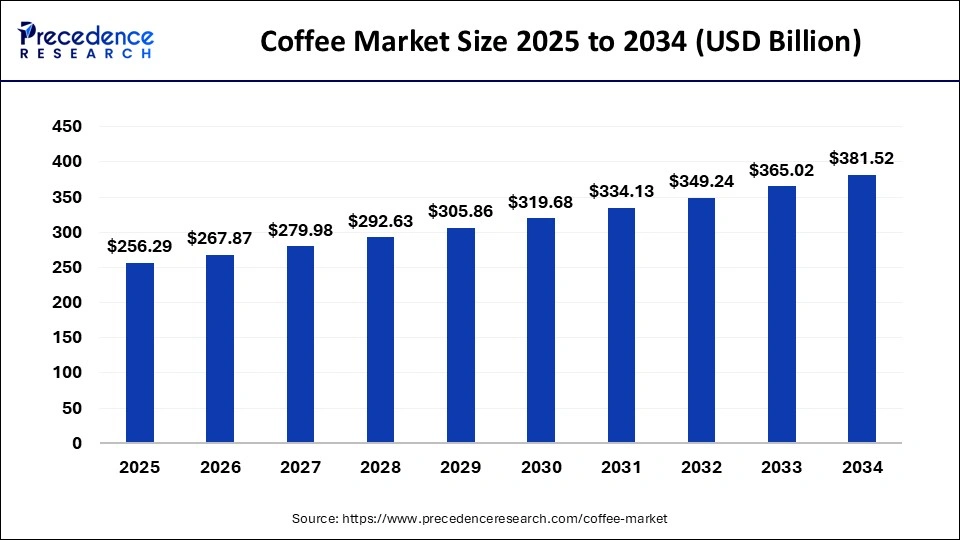
The world coffee situation is currently strongly affected by climate change and economic factors, leading to fluctuations in production and prices. The International Coffee Organization (ICO) forecasts global coffee production in the 2023-2024 crop year to increase by 5.8%, reaching 178 million bags, while consumption is expected to increase by 2.2%, reaching 177 million bags. The global coffee market will have a surplus of 1 million bags.
Both robusta and arabica coffee prices have increased sharply. Robusta prices reached $3,948 per ton, the highest level since 2008. Arabica prices reached $2.34 per pound, the highest since September 2022.
Global coffee market exports in the first 5 months of the 2023-2024 crop year reached 56.2 million bags, up 11% compared to the same period last year. Green coffee beans accounted for 92% of total exports. The global coffee situation is showing positive signs with increased production and consumption, but high prices may create challenges for businesses in the industry, and Brazil is the world’s largest coffee producing and exporting country, playing a key role in promoting green coffee bean exports.
Overall, the global coffee market has stable development prospects in the future, with driving factors including consumption growth, sustainable consumption trends, and high demand from developed markets. However, businesses need to pay attention to volatile factors such as input material prices and transportation costs to maintain competitiveness.
3. Vietnam Coffee Market Segments
The Vietnamese coffee market is segmented according to many different criteria, including product type, distribution channels, and customer targets. The Vietnamese coffee market is very diverse and developing rapidly. Changes in consumer demand, especially interest in quality and experience, are reshaping market segments, opening up many opportunities for producers and distributors.
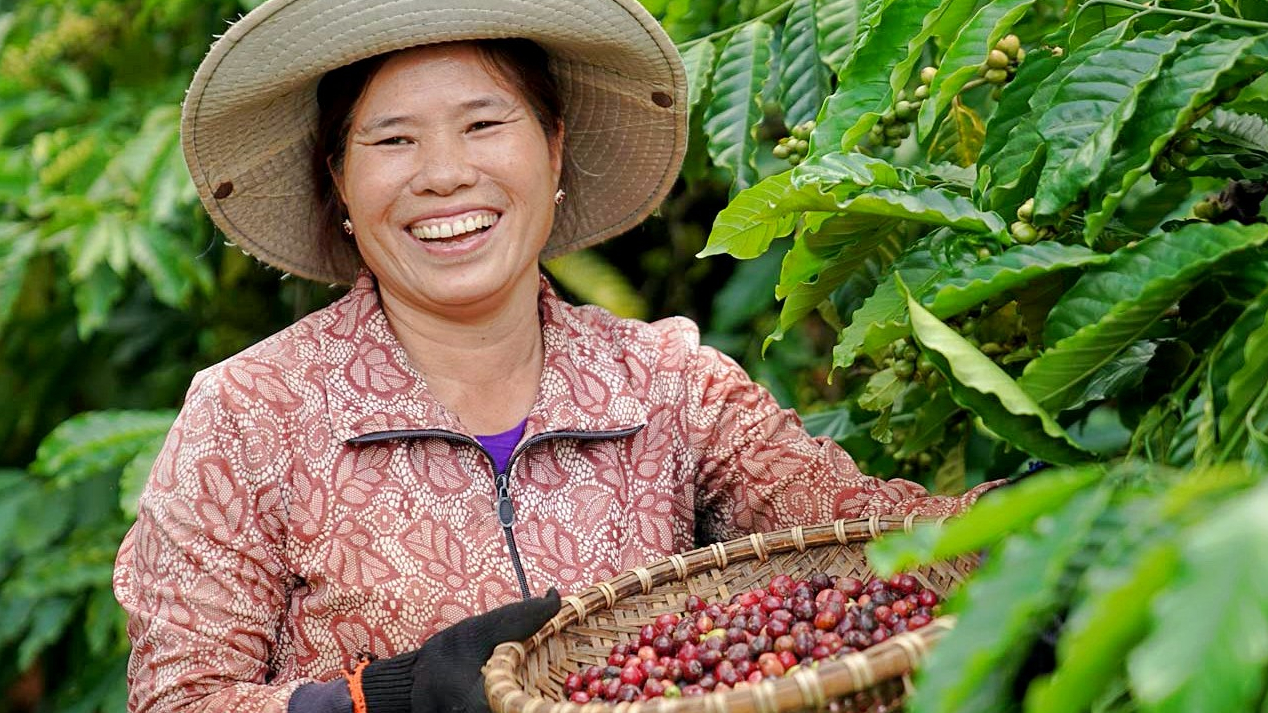
Read now: Why is Vietnamese coffee so good?
3.1 Segmentation by Product Type
- Green Coffee: Unroasted coffee, mainly for export. Vietnam is one of the world’s largest green coffee producing countries.
- Roasted Ground Coffee: Includes pure roasted coffee and blended roasted coffee. This is a segment that is developing strongly with high demand from the domestic market.
- Instant Coffee: Growing rapidly thanks to convenience and modern lifestyle. This segment mainly serves young consumers and busy people.
- Specialty Coffee: Focusing on high quality, specialty coffee is attracting attention from domestic and international consumers.
Read now: 5 best Vietnamese coffee beans
3.2 Segmentation by Distribution Channel
- Retail Channel: Includes supermarkets, convenience stores, and specialty stores. This channel is increasingly developing with the increase in demand for quality coffee consumption.
- Online Channel: E-commerce is booming, with many consumers choosing to buy coffee through websites and applications.
- Coffee Shops: Traditional coffee shops, take-away coffee shops, and coffee shop chains are becoming an important part of consumer lifestyle.
3.3 Segmentation by Customer Target
- Individual Consumers: Including coffee lovers, seeking quality and flavor.
- Businesses and Restaurants: Restaurants, hotels, and businesses are also important markets, requiring high-quality coffee to serve customers.
- Young Consumers: The younger generation, especially Gen Z, is driving demand for instant coffee and specialty coffee consumption.
3.4 Segmentation by Geographic Region
- Major Cities: Hanoi and Ho Chi Minh City are major coffee markets with high demand for quality coffee.
- Rural Areas: Although demand is not as high as in cities, the coffee market still has development potential, especially with cheap products.
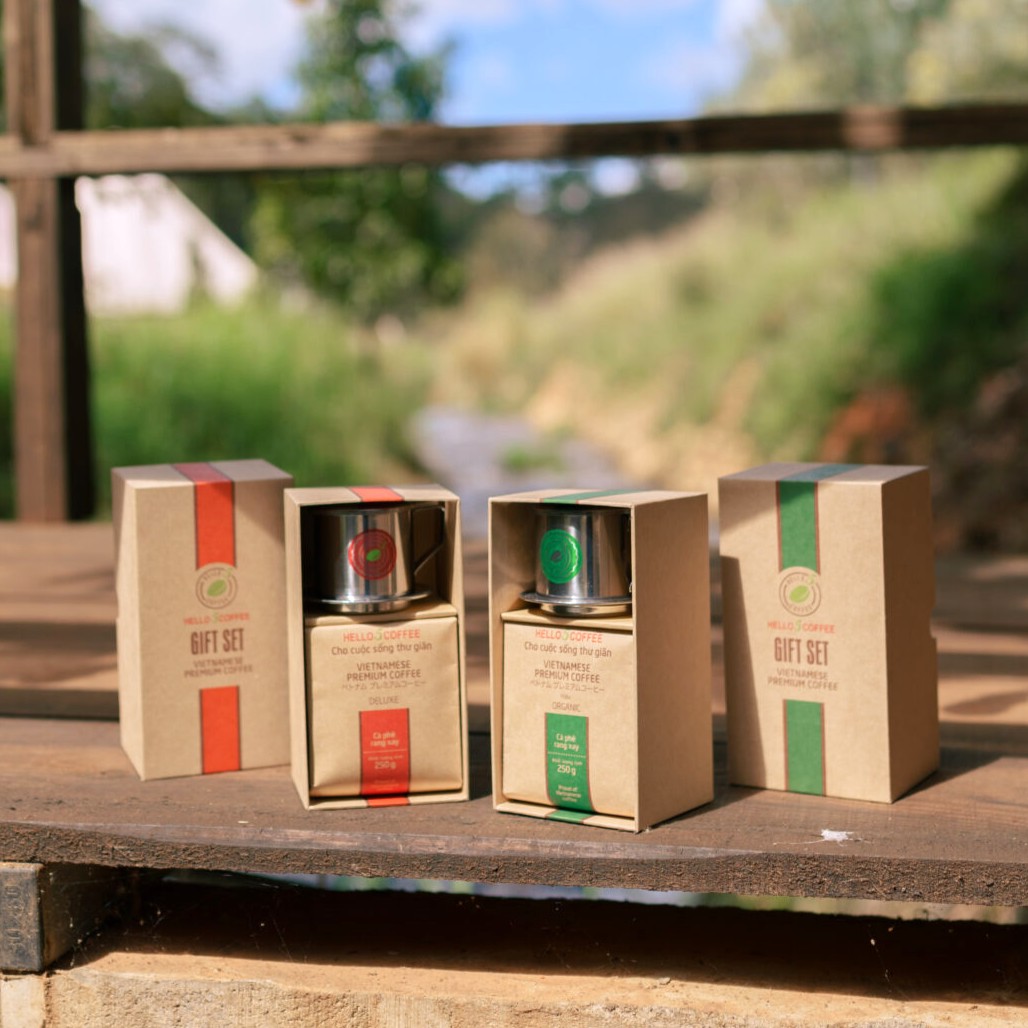
4. Factors Affecting the Coffee Market
4.1 Climate Change
- Optimal Temperature: Arabica coffee develops best at temperatures from 18°C to 22°C. According to a report by the International Coffee Research Institute (ICRI), by 2050, temperatures are expected to increase from 1°C to 2°C, reducing coffee growing area by up to 50% in some regions.
- Rainfall: According to a study from Columbia University, rainfall in coffee-growing regions may decrease from 10% to 30% by mid-21st century, leading to severe drought conditions. Water irrigation limitations can reduce coffee productivity by up to 20%.
- Pests and Diseases: According to the Food and Agriculture Organization of the United Nations (FAO), rising temperatures may increase the risk of fungal infections such as coffee leaf rust (Hemileia vastatrix). Research shows that fungal development can lead to losses of up to 40% of coffee production in affected areas.
- Growing Geography: A study from the International Food Policy Research Institute (IFPRI) indicates that 50% of current coffee growing area may no longer be suitable by 2080. Farmers will have to move to higher or more distant areas, causing difficulties for production.
- Quality and Flavor Changes: Research from the International Coffee Research Institute shows that coffee grown at higher temperatures may have inferior flavor and reduced acidity, affecting market value and consumer preference.
- Impact on Farmers’ Economic Resources: According to an Oxfam report, coffee farmers in developing countries may lose up to 30% of their income due to climate change. Coffee production in regions like East Africa may decrease by 50% by 2050, seriously affecting the livelihoods of millions of farmers.
Climate change is creating major challenges for the coffee industry, affecting productivity, quality, and farmers’ livelihoods. The need to apply sustainable and climate-adaptive farming methods is very urgent to protect the coffee industry in the future.
4.2 Coffee Market Consumer Trends
The global coffee industry does not just stop at providing daily beverages but also continuously innovates to meet the diverse and increasingly high demands of consumers. Coffee consumption trends have been and are undergoing major changes, mainly revolving around product quality, health factors, experience, and sustainability.
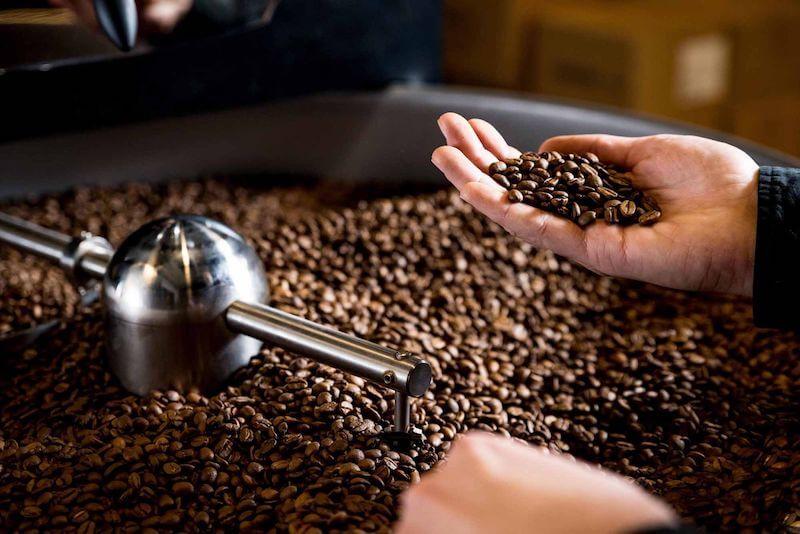
Current coffee consumer trends are changing rapidly, reflecting shifts in the market and consumer needs. Consumers are increasingly interested in coffee quality, especially specialty coffee, produced from coffee beans with clear origins and meticulous processing procedures. They are willing to pay more for high-quality products.
Consumers are not only looking for beverages but also experiences of space and services at coffee shops. Modern, creative, and environmentally friendly coffee shops are attracting large numbers of customers. They are also becoming more health-conscious, preferring organic coffee without chemicals and harmful additives. The growth of natural, sugar-free coffee products is also increasing.
In an era where e-commerce is booming, many consumers choose to buy coffee through websites and commercial platforms instead of buying directly at stores. This also promotes the development of online coffee brands. Besides, they have requirements for transparency and clarity from bean quality, production processes to packaging.
Consumers are not only looking for traditional coffee but also favor creative coffee drinks such as latte, cappuccino, cold brew, and other mixed beverages.
It can be seen that current coffee consumption trends are moving towards diversity, quality, and social responsibility. Changes in consumer needs and preferences open up many opportunities for coffee producers and distributors.
About Hello 5 Coffee
At Hello 5 Coffee, we are committed to bringing you the finest coffee experiences that align with the latest market trends. Our specialty coffee selection features sustainably sourced beans with full traceability, meeting the growing demand for quality and environmental responsibility.
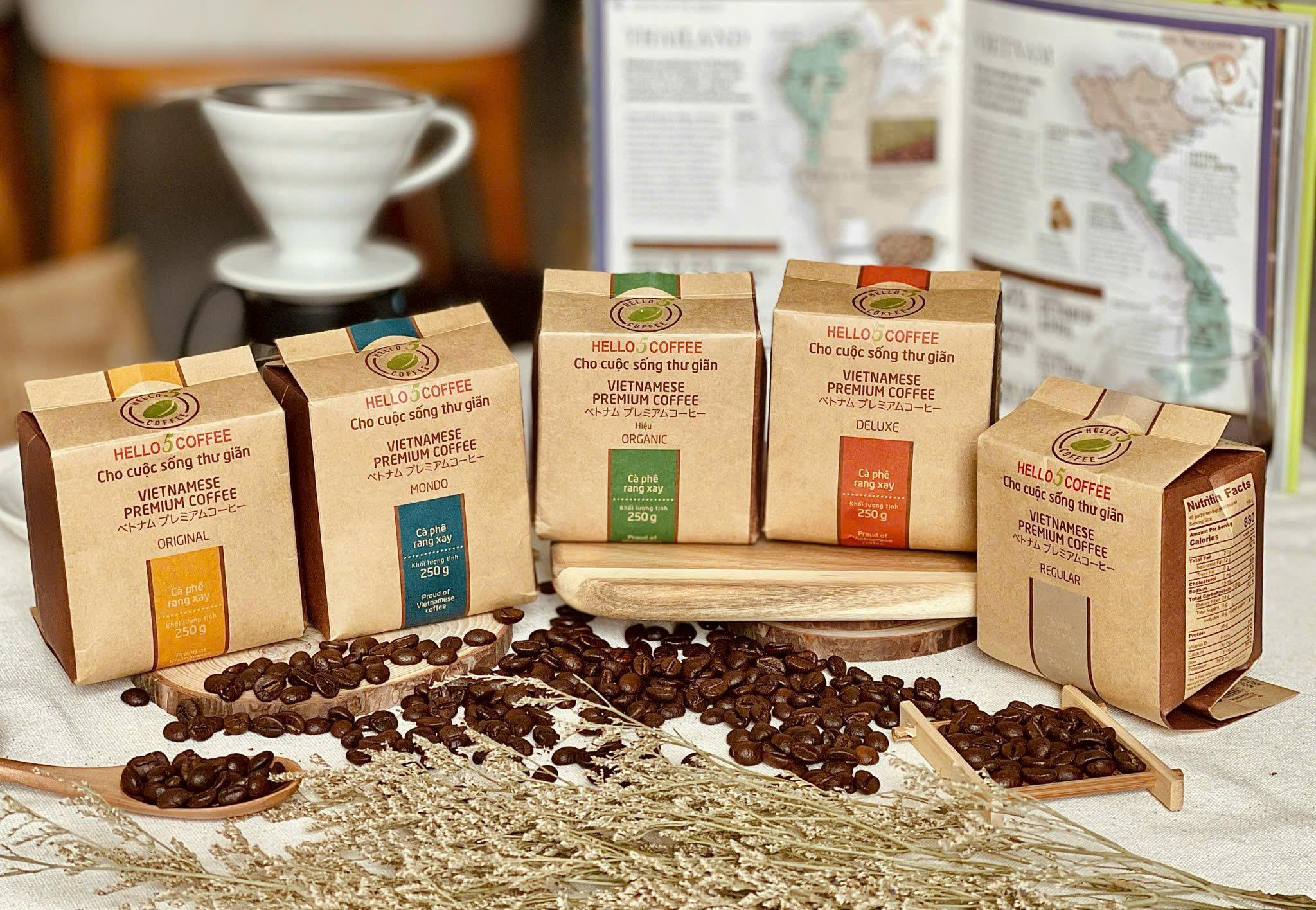
Whether you’re a cafe owner looking to enhance your offerings, an investor seeking opportunities in the coffee industry, or a coffee enthusiast wanting to experience the best, Hello 5 Coffee provides premium products and expert insights to help you succeed in the evolving coffee market.
Visit hello5coffee.com to discover our complete range of specialty coffees, learn about sustainable farming practices, and join the Hello 5 Coffee community where quality meets innovation. Let us be your partner in navigating the exciting opportunities that 2025 brings to the coffee industry.
Coffee market trends in 2025 open up many opportunities for cafe owners and investors, from improving product quality to optimizing customer experience. However, to succeed, thorough preparation and readiness to adapt to coffee market changes are needed. Invest in these trends now to ensure a solid position in the potential and competitive coffee industry!
